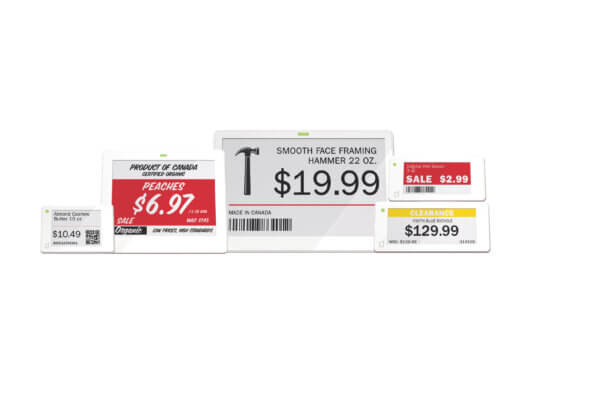Retailers and shoppers alike are gearing up for some of the biggest shopping days of the year: Black Friday and Cyber Monday. These two days have become synonymous with incredible discounts and deals, attracting millions of consumers to both physical stores and online platforms.
In the United States, Black Friday features colossal in-store sales, with shoppers eagerly awaiting the opportunity to snag discounts on a wide range of products, from electronics and fashion to home appliances and toys. Black Friday, which falls on the day after American Thanksgiving, has long been considered the unofficial start of the holiday shopping season and is known for massive crowds and doorbuster deals that entice shoppers to camp outside stores overnight and brave endless line ups in order to secure the best deal.
Similarly, Cyber Monday has seen exponential growth, appealing to the convenience-seeking consumers who prefer to shop from the comfort of their homes, especially during the era of e-commerce. Cyber Monday, the online counterpart of Black Friday which takes place on the following Monday, offers digital deals and discounts to online shoppers. Both of these days have expanded beyond their American roots and are now observed in many countries around the world, making them truly global retail events.
Given the limited window of time to activate sales and entice shoppers, retailers have several goals when it comes to Black Friday and Cyber Monday:
Boost Sales: The most obvious goal is to drive sales, sometimes achieving the entire year’s revenue in a single day. Retailers aim to offer compelling discounts and deals to attract as many customers as possible.
Brand Awareness: Black Friday and Cyber Monday are not just about immediate profits; they’re also an opportunity to create brand awareness. Retailers can use these days to showcase their best offerings and quality service, and build a new customer base via BOGO or hourly deal specials in store.
Clear Inventory: These sale days provide an excellent opportunity to clear out old or excess inventory. Retailers can make room for new products and increase their turnover by offering deep discounts on items that need to move. Fit Small Business suggests, “You can use your Black Friday promotions to target specific products that you want to sell. Before your Black Friday sale, count your inventory and determine what you have on hand. Once you have a picture of your merchandise, you can incentivize the items you need to sell through – seasonal items, old merchandise, more expensive pieces, or products that have not sold well.”
Customer Acquisition: Beyond sales, retailers also focus on gaining new customers. Offering exceptional service, user-friendly websites, and exclusive deals can help attract and retain shoppers.
Customer Loyalty: While gaining new customers is important, retaining existing ones is equally crucial. Retailers often reward their loyal customers with exclusive deals and early access to sales. “Referral codes are links or codes that are tied to a specific person,” explains Fit Small Business. “When that person shares their code, the recipient gets a reward and the referrer also gets rewarded with something like a free gift, an additional discount, or another prize.”
With fierce competition and the expectation of deep discounts, retailers need to employ strategies that set them apart during November’s shopping extravaganza. Shopivo highly recommends using SMART criteria – specific, measurable, achievable, relevant, and timely – when writing goals for your business whether on Black Friday or just in general. This allows you to focus on executing them successfully, which is absolutely crucial when writing a Black Friday sales plan. Additional key tactics include:
Multi-Channel Approach: Retailers should be present both in physical stores and online to cater to the diverse preferences of shoppers. This means optimizing websites for mobile, enhancing the in-store experience, and ensuring a seamless transition between the two. This also includes an SMS marketing campaign. According to research from Adobe Analytics, while the rapid growth of online holiday spending has started to slow, there was still a 3.5% increase in online spending during the 2022 holiday season, with ecommerce holiday sales hitting a record-breaking $211.7 billion.
Personalization: Leveraging customer data and artificial intelligence, retailers can offer personalized recommendations and exclusive deals to their consumers via email and incentivize with additional discounts/offers. This enhances the shopping experience and increases the likelihood of conversion.
Early Marketing: Building anticipation through pre-Black Friday and Cyber Monday marketing can help create a buzz around a retailer’s offerings. Teasers, sneak peeks, and countdowns can all generate excitement.
Inventory Management: Ensure sufficient stock to meet the demand. Running out of stock on a highly anticipated item can lead to customer disappointment and missed opportunities.
Customer Service/Return Policies: Exceptional customer service is vital, but so are flexible return policies when shopping online. Retailers should be prepared for increased traffic in-store and online and have support in place to service customers at the highest level.
According to Salesforce’s 2022 holiday findings, nearly one out of every five online orders placed globally during the holiday season were via buy online, pickup in-store (BOPIS). With people getting accustomed to shopping online, offering curbside pickup is a great way to increase your sales and accommodate all shopping preferences.
Black Friday and Cyber Monday continue to be significant events in the retail calendar. The shopping season of 2023 will likely be shaped by economic factors; retailers who adapt to these changing dynamics stand to make the most of this holiday shopping season.



